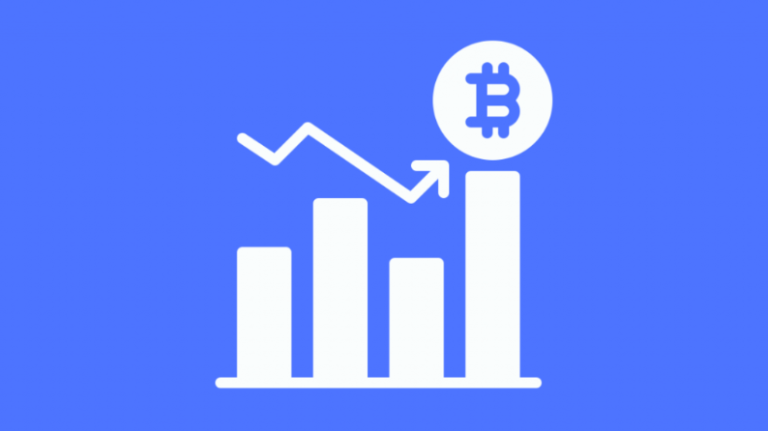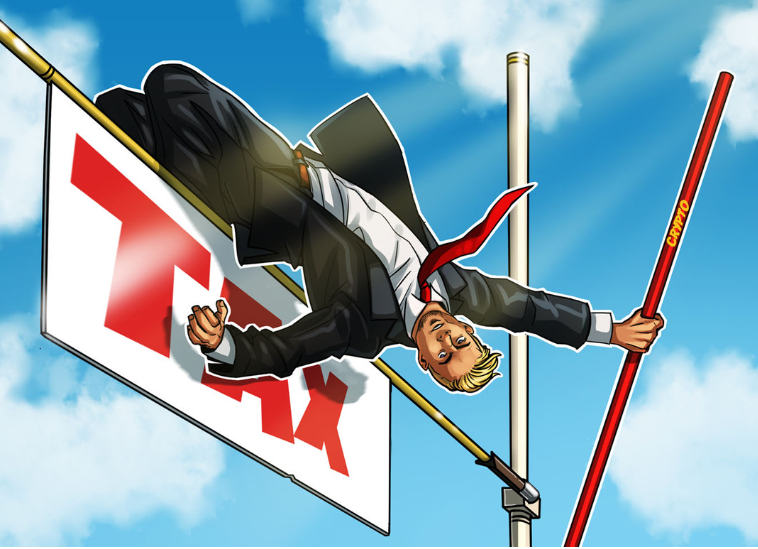Cryptocurrency Trading – What is it and how does it work?
Are you interested in cryptocurrency trading but don’t know where to start? You’re not alone. Since the launch of Bitcoin in 2009, the cryptocurrency market has exploded – and many want a piece of the pie. But the crypto world can be a confusing place if you’re brand new.
Cryptoholics covers everything in cryptocurrency trading for beginners. We have everything you need to know about investing in cryptocurrencies, interacting with the market and building smart investment strategies.
What is cryptocurrency trading?
Cryptocurrency trading means that you buy and sell cryptocurrency on an exchange. The idea behind cryptocurrency is to speculate on price movements, thus making money from short-term fluctuations.
You can either trade one type of cryptocurrency for another – for example, by converting Bitcoin (BTC) to Ethereum (ETH) – or you can trade cryptocurrency with so-called fiat money (government-issued currencies without a intrinsic value, such as SEK). Most national currencies are fiat money, such as GBP, USD and EUR.
Buy and sell cryptocurrencies via a crypto exchange
Unlike CFD trading, you must own the underlying asset if you want to trade cryptocurrency through a crypto exchange. There are more than 6000 cryptocurrencies, and not all of them are available on all exchanges. Fortunately, big names like Binance and eToro a wide range of different cryptocurrencies.
You can buy your chosen currency from the exchange itself and store them in your digital wallet, where you can hold them until you choose to sell (unless you have diamond hands, then you never sell).
Using a cryptocurrency trading platform is not for everyone. Transaction fees can be high and many platforms can seem confusing at first.
If you are a beginner, consider looking for an exchange that offers a cryptocurrency trading simulator. This serves as a mini-introduction to cryptocurrency trading to help you understand how it all works, without winning or losing any “real” money or cryptocurrencies.
CFD trading with cryptocurrencies
Another popular form of cryptocurrency trading in Sweden is so-called. CFDs (contract for difference). This leveraged financial product allows you to speculate on price movements without owning the underlying asset.
Let’s say you noticed that the price of Bitcoin Cash (BCH) has increased rapidly in recent days. You want to invest in BCH but you don’t have Bitcoin Cash tokens.
The solution? Cryptocurrency CFD trading.
When you buy a CFD, you enter into an agreement between a buyer (you) and a seller (the CFD provider). The agreement states that you will pay the seller the difference between the current value of the asset and its value at a fixed point in the future.
If the difference is negative, it means that the value of the asset has decreased and you will lose money. If the value of the asset has increased, however, the seller must pay you the difference.
You have two options when buying a CFD. You can either “go long” if you think a currency will rise in value or “go short” if you think it will lose value.
How do cryptocurrency markets work?
For many, one of the most attractive aspects of the cryptocurrency market is that it is decentralized. It is not under the direct control of a central body, such as a government or bank.
Decentralised Finance (known as DeFi) is becoming increasingly popular. Some people have grown weary of centralized financial services and markets because of the unnecessarily high fees and the risk of being taken advantage of.
Crypto markets are not connected to a specific country, so there are no fees when doing crypto transactions between different countries. The market is 100% digital and consists of a network of wallets and exchanges.
New transactions on the market are stored in a blockchain – a virtual registry that securely logs and encrypts sensitive data.
What makes cryptocurrency markets increase or decrease in value?
The cryptocurrency market is known for its volatility. 2017 saw the first market-wide bull run (a so-called “bull run”), which increased the prices of many assets, in some cases by over 30,000%. This kind of fluctuation almost never happens in the stock market. So, what makes cryptocurrency markets fluctuate?
– Access
The relationship between supply and demand is the most important factor affecting crypto markets (and any market, for that matter).
Let’s use Bitcoin as an example. The total number of bitcoin has been capped at 21 million and there are currently around 19 million in circulation. As the supply/supply decreases, the demand for the cryptocurrency is likely to increase and thus the price of BTC increases.
– Market value
A cryptocurrency’s market capitalization, commonly known as “market cap”, is a practical way to measure the popularity of an asset. The market cap is a number that tells you how much fiat money (usually in dollars) has been invested in each cryptocurrency.
You can calculate the market capitalization by multiplying the price of a token by the total number of tokens in circulation. For example, let’s say the price of an altcoin is SEK 500 and there are 20 million tokens in circulation. We then multiply 500 by 20 million, which gives us a market value of SEK 10,000,000,000.
– News
Many look to the media for tips on buying cryptocurrencies, and the portrayal of different cryptocurrencies in the media plays a big role in the movements of cryptocurrency markets.
The influence comes from traditional media and social media – such as when Elon Musk got DOGE to shoot in the height of a single Tweet.
– Integration
The most popular cryptocurrencies usually integrate well with existing technology, such as crypto exchanges and wallets. When PayPal reported that it would start supporting Bitcoin, Litecoin, Ethereum and Bitcoin Cash, it had a noticeable effect on the price of all four cryptocurrencies.
– Events
Events such as new blockchain or cryptocurrency updates, legislation, security holes and the coronavirus pandemic can also affect crypto markets, just like any other market.
How does cryptocurrency trading work?
Cryptocurrency trading works by allowing you to speculate on price movements. You must open an account with a regulated broker or crypto exchange to start trading cryptocurrency.
What does “Spread” mean in cryptocurrency trading?
Spread refers to the difference between the purchase and sale price of an asset, which is also called the bid-ask spread, or bid-offer spread.
When you initiate an order, it is called opening a position. Each time you do this, both of these prices will be listed. You can choose which of these you want to trade on, depending on whether you want to open a long position (trade above the market price) or a short one (below the market price).
Like CFD trading, spread betting is a way to speculate on whether the price of a currency will rise or fall.
What is a “Lot” in cryptocurrency trading?
Since the value of different cryptocurrencies can vary enormously, it is common to trade in batches. These are smaller parts of cryptocurrencies that are used to standardize the size of each trade.
What is leverage in cryptocurrency trading?
Leverage is a way to take advantage of price movements while gaining greater exposure to the cryptocurrency market. You can make a deposit (margin) representing a fraction of your entire order while your supplier lends you the shortfall.
When the order is closed, your potential profit or loss is calculated based on the entire order placement. This means that you can earn back more than you bet – but you can also lose more than you can afford.
What is “Margin” in cryptocurrency trading?
“Margin” is another word for deposit. The amount of money you invest in a leveraged position is expressed as a percentage of the entire deal.
What is Pip in cryptocurrency trading?
Pip stands for Price Interest Point, which means price interest point. It refers to the smallest possible price movement, usually quoted as 1/100 of 1% (eg $0.0001).
What is KYC / AML?
KYC stands for Know Your Customer and AML stands for Anti-Money Laundering or anti-money laundering. You will probably see these abbreviations on your chosen trading platform. They refer to laws and regulations that require financial companies to inform, verify and to some extent also monitor their customers.
Cryptocurrency Trading Strategies
A cryptocurrency trading strategy is designed to maximize your chance of making a profit. Examples of trading strategies include:
- Daytrading is when an investor buys and sells a cryptocurrency within the same trading session (usually within a day)
- Scalping, when an investor opens and closes a series of very short-term positions (usually every 1: e to 15th minute)
- Position trading, a long-term trading strategy that involves holding positions for weeks or months
- Swing trading, a strategy based on taking advantage of price changes (swings)
Cryptocurrency Trading Guide
Step 1: Create an account on a crypto exchange or online broker
To start trading with cryptocurrency, you need to open an account on a good crypto exchange, e.g. eToro Sweden. If you want to trade a specific asset (for example Ethereum), check that your chosen platform offers this before opening your account.
Before you can buy cryptocurrency, you must enter your personal details and verify your identity to create your account online.
Step 2: Deposit money into your account
Once you have created your account on your chosen cryptocurrency trading platform, you need to deposit funds into your digital account. You can do this by connecting your bank account and transferring funds. You can also in most cases use a VISA card, Mastercard or PayPal.
Step 3: Choose which cryptocurrencies to invest in
The next step is to decide which assets you want to invest in. Well-known cryptocurrencies like Bitcoin and Ethereum are always popular choices, but many altcoins can prove to be profitable investments.
Step 4: Determine your investment strategy
The right strategy for investing in cryptocurrency depends on several different factors, such as your level of experience, your risk appetite and how much time you can devote to trading cryptocurrencies.
Step 5: Keep your cryptocurrency safe
Step 6
Buy cryptocurrency that you can then play at a casino from any country. Cryptocasinos are a new phenomenon and if you live in Sweden, you can look for information on casinos without a Swedish license to learn all about casino utan svensk licens and where you can play with cryptocurrency.













